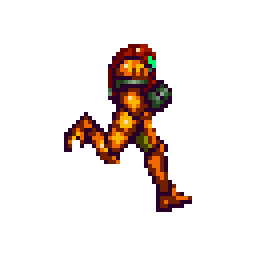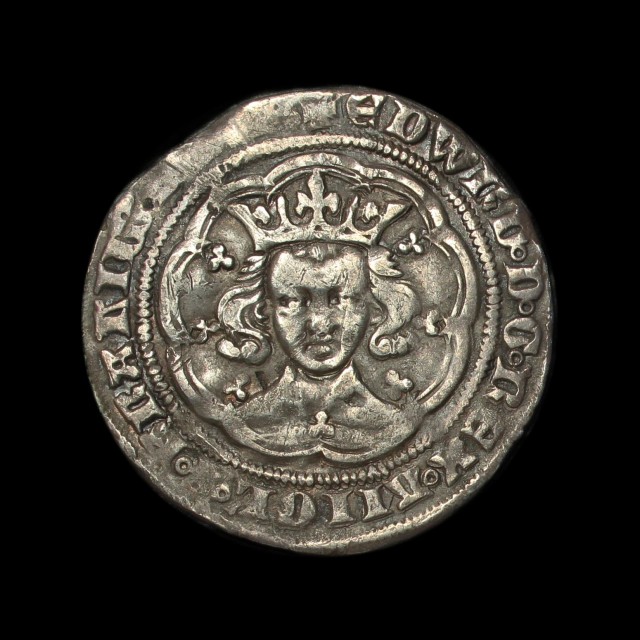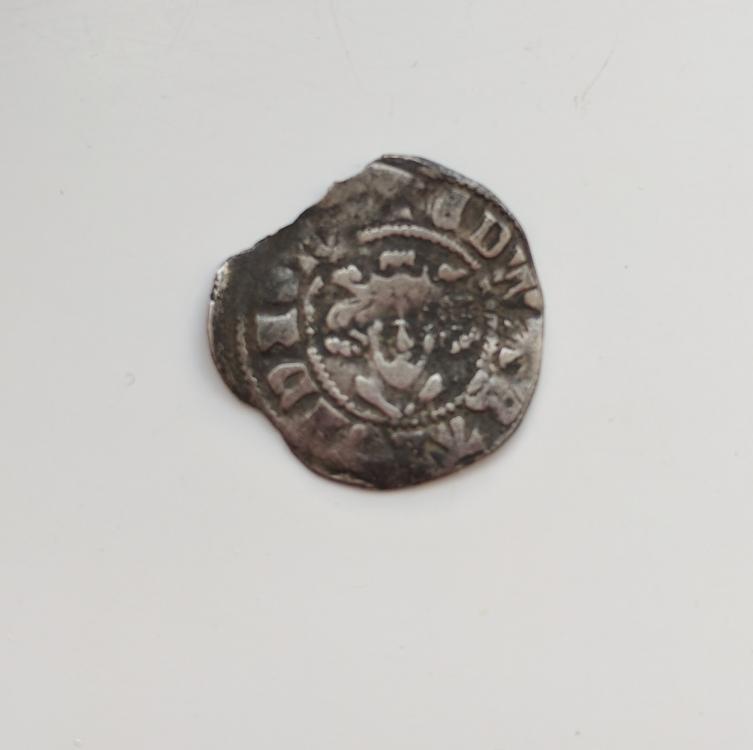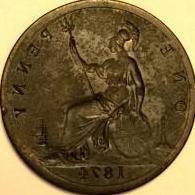Search the Community
Showing results for tags 'penny'.
-
Good Afternoon I would like your considered opinion on this "new" 1866 I have found. The date types are listed with 11 teeth 11.5 teeth and a wide date with 12 teeth BP1866 Aa;Ab and Ac respectively In Goulby . Would you be willing to search through your own 1866 pennies to see if we might find a verification. The date is clearly different from all the others mentioned notably the last 6 is High with an indent above and is very close to the first 6. Your KIND thoughts please
- 20 replies
-
I could not find the previous discussion on the 79 shuttle type so I thought it best to start again. I managed to find another recently and this one is much better grade that the previous one . I know Jerry has another that he purchased at auction 152 item # 2434 and I listed another recently on a thread but on a search I could not find it again. It is clear on this specimen that the large lump of raised metal above the lighthouse is made up of four distinct units the base which takes on the appearance of the lighthouse used in later dates H rev I think it is (not that I am saying this is why it is I just mention it as the shape is similar) a blunt ended cone. The second layer seems to be similar in shape and form but offset to the left . A higher lump on the left base and lastly the highest section mid right. Interestingly it appears that the area below seems to be bordered by a fine raised line leading down to the top of the extant lighthouse. It may be that there is a depression. well it is an interesting variety (i think so in any case) the other one I have is the exact same outline but is less detailed (worn)
- 11 replies
-
I felt that I contributed too much detail on the thread on Half pennies showing all the overstamps and errors I had found in my own collection collected in the last 6 years. Every coin has come from eBay and I have never attended an auction and I have enjoyed the challenge of finding errors already discovered and covered comprehensively by M Goulby in the specialised edition Bronze Pennies from 1860 to 1901 and others mentioned in numerous excellent websites created and administered by long time members of this forum and others who I am unsure if members. I wanted to photograph and record all my examples for my own catalogue in readiness for donation to the Trust I hope then it will be used after my demise to help them sell off my collection. I may replicate examples in other places with this in mind. I will use the prefixes used by Goulby and so that I can start to remember them the Freeman nomenclature. I find errors surprisingly interesting, Perhaps because of the turmoil in the transition to Bronze from Copper they illustrate a somewhat chaotic time at the mint. In previous discussions others have explained some of the problems there is an interesting back story which involves a lot of politics and a great deal of personal intrigue in the life of L C Wyon the designer of the new reverse and obverse. The royal mint seems to have been undergoing a lot of changes which may contribute to some of the story and sadly most f the records for this period are lost because of a fire in the records office of the Royal mint in the 19th C. If you feel you would rather this be included in some other thread then just let me know and I will stop and relocate. It takes a lot of time to photograph and record these errors. More than anything else I would be eternally grateful for your own examples that will help verify any previously unlisted. This goes for the half pennies in particular which do not get the same limelight as the penny. So please add your own Thanks
- 19 replies
-
- 3
-

-
- bronze coinage
- errors
-
(and 7 more)
Tagged with:
-
I have this 1873 penny in my collection. It has some unusual elements: Raised marks/lines either side of Victoria's neck on the obverse a raised line between the shield and lighthouse on the reverse Does anyone know what may cause these markings? I suspect it is possibly double struck or made from old dies but I am by no means certain. Would appreciate any input or opinions Thanks in advance
-
I attach images of a Henry III Long Cross Penny which I have attributed to Sp 1364 Class IIIc as there is no sceptre and the bust and the letter R appear to correspond to the illustrated guide produced by Christopher R Wren (Voided Long Cross Coinage 1247-1279 - page 53). I have identified the following anomalies: Obverse: The legend appears to start past the initial mark at 12 o' clock as expected but with RICVS REX (although there could be litigated letters before the first letter R). There is a stop after the X of REX then the legend appears to repeat the name hENR (followed by III ?)The repeat of the name I have not come across. Reverse: The Moneyer is ION/ON/ and what appears to be the name for York ending in (E)OFER. As I can find no similar reference to the exact Obverse legend I wonder if anyone can assist me. My first concern is that this may be a foreign imitation, alternatively this could be just a different legend from that usually recorded, as Class 3 has a considerable variety of lettering and portrait. I would greatly appreciate any assistance anyone can give me. graylin50 Download all attachments as a zip file Sp 1364(4).jpg 669.5kB Sp 1364(5).jpg 527.1kB 26
-
I am in search of Green Pennies , pennies and half pennies that have been buried. I know many of you might find the idea strange (well it is me ) but I am doing some experiments with green pennies and wondered if anyone has any they have dug which they might be looking to get rid of (cheap!) usually collectors don't like them so they have limited value except to strange people but I find them useful. Victorian ones are best but also earlier dates pennies or half pennies perhaps farthings. The process of the gradual replacement of the outer layer of copper alloy by percolating ground waters usually results in a complex of mixed carbonates and oxides and I ,being a fossil man, am interested in the transition. Happy to buy them but as happy to rent them or loan them or if you are feeling generous give them away. As long as they have not been chemically altered by that funny paste sadly on sale in many metal detecting clubs. THanks
- 11 replies
-
- penny
- half penny
-
(and 4 more)
Tagged with:
-
I realise I have broken a cardinal rule..namely to involve and include, a forum must be a place of gathering information. So I will start again, after a nice week touring the Galloway coast and the lakes painting I return with renewed vigour to my favourite topic. But rather than ask you to see as I see after 3 years I will try gather your opinions and ask that you do just one thing: to look with great care before you respond. In 2015 I noticed the faces of "an animal" or two "behind" the surface design on coins. I pursued a line of investigation which has allowed me, after a great deal of work, to see clearly for myself what these patterns are. THey are complex and I would like to ask those of you with time and inclination to help understand rather than just see if these patterns exist and if so what is the purpose and most importantly how could they have been "imposed" on coins since at least the late 17thC and likely earlier. I initially saw it in Bronze pennies but they are the tip of the iceberg. I have a number of avenues ..theories but I need keen observers to add to and develop ideas. I am searching for a team of amature researchers. I have no desire other than to make sense of the medium "coin face" and better understanding of the coins we all love. My tools are simple a microscope, my collection, and a fine sable brush. Although I do have many years experience with pattern recognition I do not think this is a prerequisite for discovery. At the heart of this idea is the very essence of a coin which is wrapped up in the idea of the "state" its economy and religion and key to it is the sacred relationship between the monarch and christianity. I should be clear that I am in no way religious but I do not deny the importance of the relationship KING:STATE:GOD and have to go where the answers may lay rather than ignoring I must acknowledge this triad. Transmogrification is I think key to this idea: a design that if viewed in a particular way can be a number of different forms, in the case of coins the monarchs head as an example of head of state, primary servant of God in the state, protector and carer yet must show humility to succeed. Could anyone who has an interest in mystery; solving puzzles; love of coins; history; metallurgy; alchemy (chemistry); design and art please get involved. I am more than happy to accept that if we do not solve this in a year I will deem myself totally mad and stop looking after which apart from a book about my descent into madness you will hear nothing more from me on the subject. However if we solve this riddle (as I see it!) we may uncover a beautiful aspect of coining design and history that just might make it a bit more interesting for new collectors. I am not Dan Brown, there is no Da Vinci code but he may play a part, who knows. I do not have the answers but we might be able to get them together. Many thanks Larry
- 99 replies
-
- 1
-

-
- marks on coins
- incurse lines
- (and 15 more)
-
I free-fall into dangerous territory here. You may ask "does it matter" or "who gives a rats arse" to which I would answer : if nothing else it makes us wonder ...why? There are many "penny people" on this forum and you all love this coin (as do I) but after about a year of this blind love affair ,as you know, I began to look with great care at the design. So I ask the forum why is it that Britannias hand is in an impossible pose and why is this obvious artistic flaw reproduced year after year. You see I cannot just be a blind collector, I cannot just see a bit of bling on a coin and go....wow! I would ask then you all to carry out a piece of experimental examination and feed back to me...please. But you have to do the experiment before you shout me down. sit in the exact same position that Britannia is in an get yourself a shield and a trident...no just a broom will do (if you have not yet fully converted to the dyson) I am a little old fashioned. now this is critical you must drop the left shoulder and angle the arm exactly as she has it. Take up your broom (not a call to revolt or to take up arms) now curl your fingers exactly as on the coin around your broom handle making sure to have the shaft cross the inside of the arm push it forward all the fingers must be evenly curling and I think the thumbs goes ...well it depends usually around the back. Now in your seated position twist back and take the weight on your shield...(I am sure you can be inventive) So can the hand ever be in this position can the fingers ever be in this position? Is it anatomically possible? If not why model it this way? What does it tell us about the attitude of the RM if anything? why did LCW allow it ? do it? if none of this matters to you that is also an important piece of the research game because if the public dont notice why bother to change it. This is todays challenge and even having done Yoga for many years; I can happily fold my leg behind my head and twist in to some ungodly positions, be careful not to strain yourself. Many thanks for your help ahead of it arriving. Have a good day Larry
-
I posted a question on the design and aesthetic in bronze Victorian pennies which I would like to open a little. Obverse 6 is a common obverse in pennies from 1861 to 1874 in fact it is maybe the most common obverse, and so it seems safe to assume the obverse was copied over and over again to accompany a range of reverses. Yet there is a puzzle that I have mused over for a while and would be grateful for your thoughts. One of the characteristic ways to identify the obverse is the flaw on the last colon after FD why would the flaw be copied over and over again? Whilst the flaw is copied I have found a variety of legend alterations and corrections throughout this time span of 14 years of penny manufacture. To me this is confusing as much as the flaw is small on a tiny part of the design why would it not be corrected ? is it that the Mint did not care about it? Does it really matter? can it tell us anything about the history of the die? I know I bore you all with my questions but it seems a little strange and I would be grateful for any reasoning. Larry
-
That conversation about the open 3 in the 1863 I wonder if anyone else has one so I might compare with mine. I am interested in details of the area above the three, and the structure of the upper part of the three. I will post mine for comparison I thought I might sell one for the charity and likely put it on ebay as an auction. But before I do I would like to make a brief study of the type. Thanks
-
Could someone tell me if this is an overstrike on the letter E in the word PENNY? Or is it wishful thinking...... thanx in advance
- 13 replies
-
I have been studying the bronze series for a few years under the microscope and would ask if anyone else has one of the the following in their collection: 1879 REV J penny large metal addition above the lighthouse. No sign of compression or metal distortion. Additional observation in subsequent examples of the 1879 penny show a raised mound and removal scars matching the form of the metal found on specimen A. The metal is at its highest 1 mm off the surface rises in the middle. defined edge and coincidentally seems to match reverse H lighthouse top. It is an intriguing metal addition and I would ask if anyone has any evidence in 1879 pennies of anything similar. In 3D visualisation of the anomaly there is no strike to any of the metal in the vicinity which could cause a ripple in the metal. Note that the metals medial apex would shift anything slightly to the left of the present light house REV J all other features so far remain the same for this die type, although I have to look in more detail.
-
I bought this Edward III series C pre treaty groat (minted in London) however noticed that the “A” is missing from “EDWARD” making it just “EDWRD”. I have done research but can find no other Edward III groat with this inscription. Please help, many thanks
-
Help a beginner out! I purchased my first unidentified hammered silver coin and while I am pretty confident it is an Edward The something Penny I am not sure which Edward. Let alone the mint. I have done considerable research online and made good use of my copy of Spinks Coins of England plus "Englands Striking History" but I am stumped. I have taken the best photos I can, the top 2 are not quite a natural colour, I have enhanced the contrast a little to aid identification. The bottom is near natural colour. The coin is 20mm diameter. Cannot give a weight yet (scales on order). The coin 'feels right' and is worn. I believe the obverse text is EDWARD REX ANGL DN. Reverse more difficult, possibly COM G/R U/V EC NIVA IIP/K E. Pellet before the E of EDWARD. The N is of the Lombardic style. The cross mintmark is typical of Edward 3. Can someone can tell me if this is a tri-foliate crown or not? Oh, and if this is a modern copy, break it to me gently but this coin was pretty cheap.Thanks in advance, Pete
-
Hello, I'm new to the forum, I've just signed up as I was wondering if someone would be able to give me any help with this coin that a friend gave to me. Although I have always been interested in coins it has only ever been a casual hobby I have a small collection mostly consisting of coins given to me by friends and family. After a little research online I think I have identified it as a England, Edward I (1272-1307), Penny, 1.43g., 20mm but I'm struggling to find any other information about the coin, alot of the coins from this period seems to be very similar in appearance. As someone new to coins where is the best place to learn more? Thanks in advance for any help received, Kind Regards, JimmyMercia.
-
Hi I have got a 1918 one penny kn but have no idea what value it may have or how to find this out - i have seen prices range from 30-2500 - any tips?
-
Hi all, I'm almost finished with the 20th Century with the exception of a really nice 1904 penny (and the '18 kn + h varieties, but I'll wait for these). I was hoping someone had a nice example they want to sell? I don't really want to wait until the next LondonCoins auction, and they're seldom seen in UNC+ on eBay. Thanks! Matt
-
There is only 1 Irish 1938 penny in private hands. The only other example is held by the National Museum of Ireland, so in effect, the other coin is unique in terms of its availability. Of course, rarity alone is not an indication of value - demand is the most important factor ! For background info on the 1938 Irish penny, see https://oldcurrencyexchange.com/2014/08/21/rare-coins-the-1938-irish-penny/
-
Last Friday, a British 1933 penny was sold at auction, by Heritage Auctions, in Anaheim, California at the ANA World’s Fair of Money for US$ 179,000 This equates to €174,411.06 or GB£151,920.22 I cannot help wondering if this coin might have sold for more money if offered for sale in a British auction. What was the logic behind selling it via an American auction house in California? Did the post-Brexit dip in the value of Sterling adversely affect the bids from the UK? For more info on this extremely rare coin, see https://oldcurrencyexchange.com/2014/08/20/rare-coins-the-1933-british-penny/
-
Ive just purchased my very first 1860 Beaded Penny but am failing to identify it as per Gouby. Here is my problem Gouby states Obverse B = 'O' of SO above colon dot after D: of F:D - yes Hair curls forward and down - possibly - only 3 hairs point down "R" and "E" touch at the base - yes Obverse C = as B however Eyeline vertical - i think yes Inner rim much thinner - well yes its thinner than the Reverse The Reverse i think ive got = B therefore im going for 1860E With regard grade how would the experts in the forum grade this coin. Apologies re the cr*p pictures.
-
Just another sunny day in paradise - why you might ask, well after looking for years to find an 1860 Beaded Penny i have just bought one. Ive wanted one that wouldnt cost too much and wouldnt be a washer. Ok its not Unc or even EF, but its better than Fine. So im a happy chappy.

.jpg.b32f799925bd184e47dafb80cea6fad6.jpg)
.jpg.84660e96d89c5a17fa724746b09658f2.jpg)
.jpg.eab66b63832ec189445389ef4084f0fe.jpg)
.jpg.ce898fb55fbc726d3d59f528c071bf45.jpg)


.thumb.jpg.dffc6e7e4f9c7a4ceb3195a9721d2d9a.jpg)


.jpg.bb0a696c80cc354884dfa1a2bc9c6542.jpg)
(269x400).jpg.01fe50427c1fedf3d2df992cf401ed07.jpg)


.jpg.3d6874d8f8eca6ed0678c126de4fb9b2.thumb.jpg.061f9faed5d4a1c82b1d93813b8e785c.jpg)





.jpg.bdeb89fd2f05129034dc999dc21a1242.jpg)